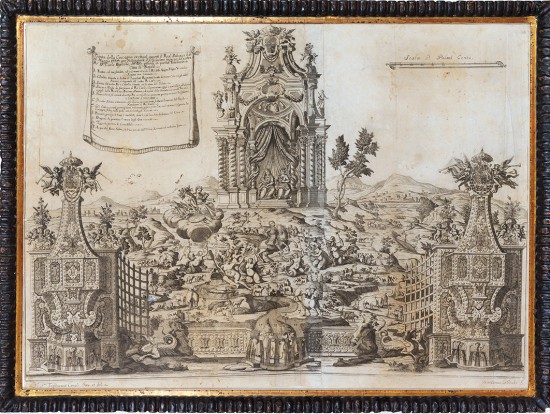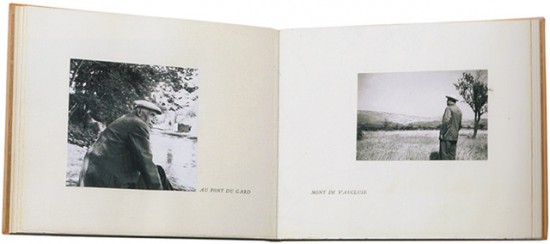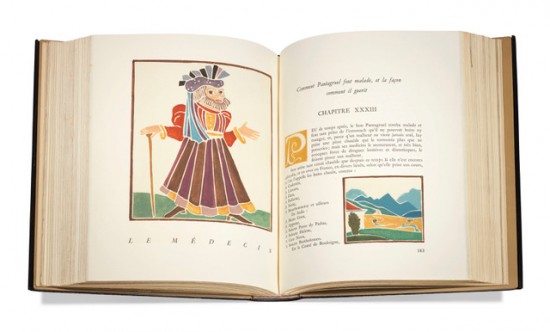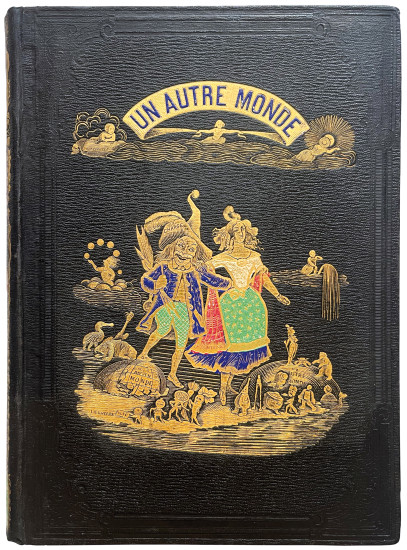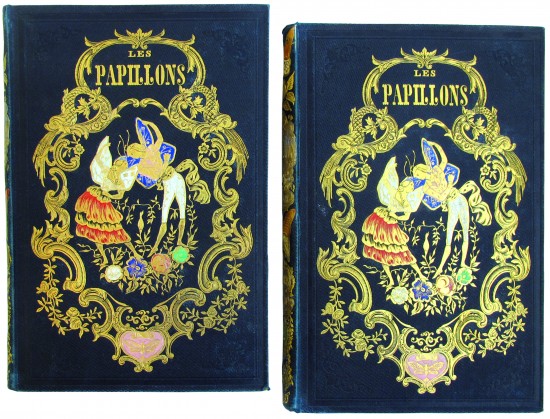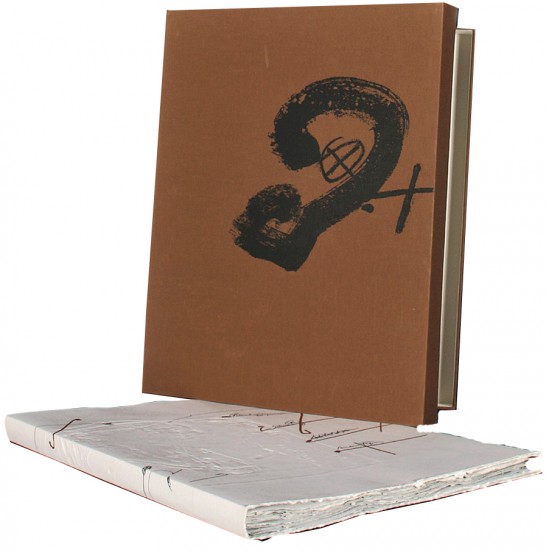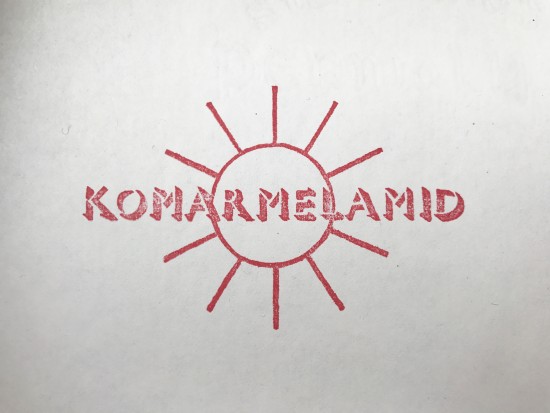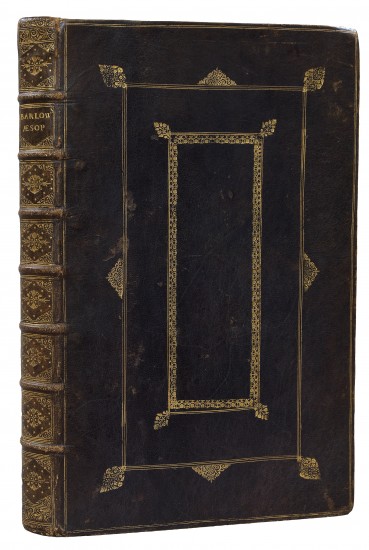Machina della Coccagna
Rosso / Vaccaro / Canale
Naples. Per Francesco Ricciardo Stampatore di Sua Ecc[ellen]za. il Sign[ore]. Vicere. 1729–1734
Sold
An exceptional extant corpus of the Neapolitan Coccagna engravings.
These exquisite plates are a rare record of the infamous Neopolitan festivals that took place during the reign of the Holy Roman Emperor Charles VI.
Published by Francesco Ricciardo, they celebrate the birthday of the Empress Elisabeth Christine of Brunswick-Wolfenbüttel (August 28th) or the name day of the Emperor Charles (November 4th), or for the final plate, the entry of the Emperor into Naples.
The final plate, engraved by Bartolomeo de Grado rather than his father Francesco, is particularly intriguing as it provides a printed key to the iconography of the plate, which incorporates the Habsburg coat of arms (double-headed eagles are to be found elsewhere), mermaids and nymphs who applaud King Charles and present lilies which allude the Bourbon and Farnese House, and other numerous references to power, dynasty, mythology and fecundity.
While the notion of the festival book or print is well accepted and examples exist wherever the demonstration of power and largesse has proved effective as propaganda, the Neapolitan Coccagna festival and its association with the festival print and intendant patronage is unique. These prints were presumably given to noble spectators at the royal celebrations.
The large fantastical etchings depict Machina della Coccagna - large edifices, palaces, fortifications, belvederes or ziggurats whose walls are cobblestoned with food (mostly bread, cheese and livestock) for the various festivities taking place. The Machina della Coccagna ground these prints heavily in the Neopolitan tradition.
Moveable feasts occurring throughout Europe at this time drew heavily on medieval notions of the mythic Land of Plenty/Land of Cockaigne, one of the most persistent desires for the return to a terrestrial Paradise Lost and a rich source of inspiration for artists, musicians and writers. Whilst the myth widely connotated a sensual paradise, here in Italy we witness a gastronomic utopia and some of the most elaborate examples of Coccagnaesque visualisations: fountains flow with wine, trees bear cakes, animals cavort ready for carving and all is at ease in a seeming idyll.
It was the Habsburg regimes of the eighteenth century which best capitalised on the Coccanga concept, as the festivals gradually merged in the public imagination with royal and imperial celebrations. These regimes eventually favoured a single architectural structure strategically placed in front of the royal palace, suppressing the egalitarian and utopian spirit of the carnival and making the King himself the focal point.
Cruelty was in prevalent, and this was witnessed by many a grand tourist who described the events in diaries — the Marquis de Sade even concluded that cruelty was the very essence of the festival. This is perhaps nowhere better exemplified than in the Coccagna pole (a subject also painted by Goya with comic overtones), which was lined with grease for the adventurous, or perhaps more accurately the desperate, to climb and claim an edible prize of sausage, salami or prosciutto.
At the conclusion of the festivals the hungry masses would have permission to destroy the monuments and seize the foodstuffs, which invariably led to violence and many fatalities. Neopolitan Coccagna of this kind ended with the famine in 1764, but Naples was heavily associated with Paese di Coccagna well into the nineteenth century.
While other plates depicting Machina della Coccagna are known, including those engraved by Francesco and Bartolomeo de Grado, of the ten presented here, we can trace only one. The plate listed above under number 3 — by Francesco de Grado after Domenico Antonio Vaccaro — was featured in the Getty exhibition The Edible Monument and is present in their collection. We can trace no other examples of the remaining plates. The series presented here was displayed in the exhibition Capolavori in Festa in Naples, December 20th 1997 - March 15th 1998.
Further details on the iconography of the individual plates and their subjects are available on request.
'The cuccagna is not properly a festival, but rather an ornamental public display of food made for festivals, followed by the opportunity to feast on the elements of the decorations. In eighteenth-century Naples these developed into monumental set-pieces ... ' (Marcia Reed)
'For the Neapolitan people the 'Macchine della Cuccagna' must have appeared like dreams which beckoned and promised an end to hunger and poverty ... Although we may think of festivals as celebratory occasions, there were other aspects. Although we may think of festivals as celebratory occasions, there were other aspects. The progress of the festival created a tension between the depicted ephemeral paradise where no one went hungry and the awkward earthbound scramblings of the street people for sustenance and survival in the face of edible temptations.' (Marcia Reed)
‘Cockaigne, Land of (Kok ān'). An imaginary land of ideleness and luxury, famous in mediaeval story. Ellis in his 'Specimens of Early English Poets' gives an early translation of a 13th-century French poem called 'The Land of Cockaign' in which the houses were made of barley sugar cakes, the streets were paved with pastry, and the shops supplied goods for nothing ... LONDON has been so called, with punning reference to COCKNEY. Boileau applies the name to Paris ... The name may well mean the 'land of cakes', ultimately from Lat. 'coquere', to cook. Scotland is called the 'land of cakes'.' (Brewer).
The list of plates, with their details, is as follows:
1. Machina della Coccagna Per Sollennizzare il nome Glorios[sissi]mo dell Augus[tissi]mo IMPERATORE REGNANTE CARLO VI Re di Spagna Ungaria Boemia &c. Fatta erriggere nella Piazza dell Real Palazzo dell Ecc[ellentissi]mo Sig[nore] D[on] Luigi Tomaso Raimondo Conte di Harach Vice Re Luogo Tenente e Capitan Gen[era]le nel Regno di Napoli a di IV. Novembre 1729. (c.495 x 770 mm). Francesco de Grado after Christoforo Rosso.
2. Machina della Coccagna Per Sollennizzare il nome Glorios[sissi]mo dell Augus[tissi]mo IMPERATORE REGNANTE CARLO VI Re di Spagna Ungaria Boemia &c. Fatta erriggere nella Piazza dell Real Palazzo dell Ecc[ellentissi]mo Sig[nore] D[on] Luigi Tomaso Raimondo Conte di Harach Vice Re Locote[nen]te e Capitan Generale nel Regno adi 4 Nouembre 1730. (c.510 x 750 mm). Francesco de Grado after Christofano Rosso.
3. Machina della Coccagnia Fatta erigere Avanti il Real Palazzo da Sua Ecc[ellen]za Il Sig[nor] D[on] Luise Raimondo Conte di Harach &c. Vice Re Luogote[nen]te e Capitan Generale di questo Regno di Napoli per festeggiare il di 28 Agosto Giorno Natalizio di S. M. C. e C. di ELISABETTA IMPERATRICE Regniante. (c.490 x 740 mm). Francesco de Grado after Dom[eni]co Antonio Vaccaro.
4. Fatta erigere Avanti il Real Palazzo da Sua Ecc[ellen]za Il Sig[nor] D[on] Luise Raimondo Conte di Harach &c. Vice Re Luogote[nen]te e Capitan Generale di questo Regno di Napoli per festeggiare il di 28 Agosto Giorno Natalizio di S. M. C. e C. di ELISABETTA UMPERATRICE Regniante – 1731. (c.490 x 715 mm). Francesco de Grado after Cristofaro Rosso.
5. Machina della Coccagna Per Sollennizare il Nome Glorios[sissi]mo dell Augus[tissi]mo IMPERATORE Regnante CARLO SESTO e TERZO fatta ergere Avanti il Real Palazzo da Sua Ecc[ellentissi]mo il Sig[no]r D[on]. Luise Raimondo Conte di Harach &c. Vice Re Lugg[otenen]te e Capitan Generale di Questo egno di Napoli il di 4 Novembre 1731. (c.495 x 715 mm). Francesco de Grado after Cristoforo Rosso.
6. Machina della Coccagna Fatta ergere Avanti il Real Palazzo da S[ua] Ecc[ellen]za Il Sig[nor] D[on] Luise Raimondo Conte Harach &c. Vice Re Lugg[otenen]te e Capitan Generale di questo Regno di Napoli per festeggiare il di 28 Agosto Giorno Natalizio di S. M. C e C. d’ELISABETTA Imp[eratric]e Regnante. 1732. (c.495 x 740 mm). Francesco de Grado after Cristofero Rosso.
7. Machina della Coccagna Per Sollennizzare il Nome Glorios[sissi]mo dell Augus[tissi]mo IMPERATORE Regnante CARLO Sesto e Terzo fatta ergere Avanti il Real Palazzzo da Sua Ecc[ellentissi]mo il Sig[no]re D[on]: Luise Raimondo Conte di Harach & Vice Re Lugg[otenen]te Cap[ita]n Gente di Questo Regno di Napoli di 4 Novembre 1732. (c.495 x 745 mm). Francesco de Grado after Cristofero Rosso.
8. Machina della Coccagna Fatta erigere Avanti il Real Palazzo dal Ecc[ellentissi]m oil Sig[no]r Conte D[on] Giulio Visconti Borromeo, Arese Cav[alie]re dell Insigne Ordine del Toison d’Or Consigliere intimo di Stato, Maresciallo &c. Vice re Luogotenente e Capitan Generale in questo Regno di Napoli il di 28. Agosto Giorno Natalizio di Sua Maesta C: e C: di ELISABETTA CHRISTINA Imperatrice Regnante 1733. (c.515 x 715). Francesco de Grado after Christ[oforo]. Rosso.
9. Machina della Coccagna Per Sollennizzare il Nome Glorios[sissi]mo della Augus[tissi]mo IMPERATORE Regnante CARLO VI RE di Spagna Ungaria Boemia &c. Fatta eriggere nella Piazza del Reale Palazzo dall’ Ecc[ellentissi]mo Sign[or]. Conte D[on]. Giulio Visconti Borromeo Arese Cav[alie]re dell’Insegna dell Ord[i]ne del Toison d’Oro, Consig[lie]re Intimo di Stato Maresciallo &c. Vicere Luog[otenen]te e Cap[ita]n Gen[era]le in questo Regno di Napoli il di 4 di Novembre 1733. (c.515 x 675 mm). Francesco de Grado after Cristoforo Rosso.
10. Pianta della Cuccagna erettasi Avanti il Real Palazzo il di 16 Maggio 1734: per festeggiare il felecissimo ingress del nostro Re D[on] Carlo Borbone che Dio guardi in questa Fedelessimo Citta di Napoli. (c.570 x 800 mm). Bartolomeo de Grado after Nicol[a]us Tagliacozzi Canale.
While other plates depicting macchina della coccagna are known, including those engraved by Francesco and Bartolomeo de Grado, of the ten presented here, we can trace only one. The plate listed above under number 3 - by Francesco de Grado after Domenico Antonio Vaccaro - was featured in the Getty exhibition 'The Edible Monument' and is present in their collection. We can trace no other examples of the remaining plates. The series presented here was displayed in the exhibition 'Capolavori in Festa' in Naples, December 20th 1997 - March 15th 1998.
[Capolavori in Festa, Grafica 3.26a - 3.26l; see Capolavori in Festa, Effimero Barocco a Largo di Palazzo (1683 - 1759), Naples, 1997; The Edible Monument, Marcia Reed, Los Angeles, 2000; Brewer, A Dictionary of Phrase and Fable].
These exquisite plates are a rare record of the infamous Neopolitan festivals that took place during the reign of the Holy Roman Emperor Charles VI.
Published by Francesco Ricciardo, they celebrate the birthday of the Empress Elisabeth Christine of Brunswick-Wolfenbüttel (August 28th) or the name day of the Emperor Charles (November 4th), or for the final plate, the entry of the Emperor into Naples.
The final plate, engraved by Bartolomeo de Grado rather than his father Francesco, is particularly intriguing as it provides a printed key to the iconography of the plate, which incorporates the Habsburg coat of arms (double-headed eagles are to be found elsewhere), mermaids and nymphs who applaud King Charles and present lilies which allude the Bourbon and Farnese House, and other numerous references to power, dynasty, mythology and fecundity.
While the notion of the festival book or print is well accepted and examples exist wherever the demonstration of power and largesse has proved effective as propaganda, the Neapolitan Coccagna festival and its association with the festival print and intendant patronage is unique. These prints were presumably given to noble spectators at the royal celebrations.
The large fantastical etchings depict Machina della Coccagna - large edifices, palaces, fortifications, belvederes or ziggurats whose walls are cobblestoned with food (mostly bread, cheese and livestock) for the various festivities taking place. The Machina della Coccagna ground these prints heavily in the Neopolitan tradition.
Moveable feasts occurring throughout Europe at this time drew heavily on medieval notions of the mythic Land of Plenty/Land of Cockaigne, one of the most persistent desires for the return to a terrestrial Paradise Lost and a rich source of inspiration for artists, musicians and writers. Whilst the myth widely connotated a sensual paradise, here in Italy we witness a gastronomic utopia and some of the most elaborate examples of Coccagnaesque visualisations: fountains flow with wine, trees bear cakes, animals cavort ready for carving and all is at ease in a seeming idyll.
It was the Habsburg regimes of the eighteenth century which best capitalised on the Coccanga concept, as the festivals gradually merged in the public imagination with royal and imperial celebrations. These regimes eventually favoured a single architectural structure strategically placed in front of the royal palace, suppressing the egalitarian and utopian spirit of the carnival and making the King himself the focal point.
Cruelty was in prevalent, and this was witnessed by many a grand tourist who described the events in diaries — the Marquis de Sade even concluded that cruelty was the very essence of the festival. This is perhaps nowhere better exemplified than in the Coccagna pole (a subject also painted by Goya with comic overtones), which was lined with grease for the adventurous, or perhaps more accurately the desperate, to climb and claim an edible prize of sausage, salami or prosciutto.
At the conclusion of the festivals the hungry masses would have permission to destroy the monuments and seize the foodstuffs, which invariably led to violence and many fatalities. Neopolitan Coccagna of this kind ended with the famine in 1764, but Naples was heavily associated with Paese di Coccagna well into the nineteenth century.
While other plates depicting Machina della Coccagna are known, including those engraved by Francesco and Bartolomeo de Grado, of the ten presented here, we can trace only one. The plate listed above under number 3 — by Francesco de Grado after Domenico Antonio Vaccaro — was featured in the Getty exhibition The Edible Monument and is present in their collection. We can trace no other examples of the remaining plates. The series presented here was displayed in the exhibition Capolavori in Festa in Naples, December 20th 1997 - March 15th 1998.
Further details on the iconography of the individual plates and their subjects are available on request.
'The cuccagna is not properly a festival, but rather an ornamental public display of food made for festivals, followed by the opportunity to feast on the elements of the decorations. In eighteenth-century Naples these developed into monumental set-pieces ... ' (Marcia Reed)
'For the Neapolitan people the 'Macchine della Cuccagna' must have appeared like dreams which beckoned and promised an end to hunger and poverty ... Although we may think of festivals as celebratory occasions, there were other aspects. Although we may think of festivals as celebratory occasions, there were other aspects. The progress of the festival created a tension between the depicted ephemeral paradise where no one went hungry and the awkward earthbound scramblings of the street people for sustenance and survival in the face of edible temptations.' (Marcia Reed)
‘Cockaigne, Land of (Kok ān'). An imaginary land of ideleness and luxury, famous in mediaeval story. Ellis in his 'Specimens of Early English Poets' gives an early translation of a 13th-century French poem called 'The Land of Cockaign' in which the houses were made of barley sugar cakes, the streets were paved with pastry, and the shops supplied goods for nothing ... LONDON has been so called, with punning reference to COCKNEY. Boileau applies the name to Paris ... The name may well mean the 'land of cakes', ultimately from Lat. 'coquere', to cook. Scotland is called the 'land of cakes'.' (Brewer).
The list of plates, with their details, is as follows:
1. Machina della Coccagna Per Sollennizzare il nome Glorios[sissi]mo dell Augus[tissi]mo IMPERATORE REGNANTE CARLO VI Re di Spagna Ungaria Boemia &c. Fatta erriggere nella Piazza dell Real Palazzo dell Ecc[ellentissi]mo Sig[nore] D[on] Luigi Tomaso Raimondo Conte di Harach Vice Re Luogo Tenente e Capitan Gen[era]le nel Regno di Napoli a di IV. Novembre 1729. (c.495 x 770 mm). Francesco de Grado after Christoforo Rosso.
2. Machina della Coccagna Per Sollennizzare il nome Glorios[sissi]mo dell Augus[tissi]mo IMPERATORE REGNANTE CARLO VI Re di Spagna Ungaria Boemia &c. Fatta erriggere nella Piazza dell Real Palazzo dell Ecc[ellentissi]mo Sig[nore] D[on] Luigi Tomaso Raimondo Conte di Harach Vice Re Locote[nen]te e Capitan Generale nel Regno adi 4 Nouembre 1730. (c.510 x 750 mm). Francesco de Grado after Christofano Rosso.
3. Machina della Coccagnia Fatta erigere Avanti il Real Palazzo da Sua Ecc[ellen]za Il Sig[nor] D[on] Luise Raimondo Conte di Harach &c. Vice Re Luogote[nen]te e Capitan Generale di questo Regno di Napoli per festeggiare il di 28 Agosto Giorno Natalizio di S. M. C. e C. di ELISABETTA IMPERATRICE Regniante. (c.490 x 740 mm). Francesco de Grado after Dom[eni]co Antonio Vaccaro.
4. Fatta erigere Avanti il Real Palazzo da Sua Ecc[ellen]za Il Sig[nor] D[on] Luise Raimondo Conte di Harach &c. Vice Re Luogote[nen]te e Capitan Generale di questo Regno di Napoli per festeggiare il di 28 Agosto Giorno Natalizio di S. M. C. e C. di ELISABETTA UMPERATRICE Regniante – 1731. (c.490 x 715 mm). Francesco de Grado after Cristofaro Rosso.
5. Machina della Coccagna Per Sollennizare il Nome Glorios[sissi]mo dell Augus[tissi]mo IMPERATORE Regnante CARLO SESTO e TERZO fatta ergere Avanti il Real Palazzo da Sua Ecc[ellentissi]mo il Sig[no]r D[on]. Luise Raimondo Conte di Harach &c. Vice Re Lugg[otenen]te e Capitan Generale di Questo egno di Napoli il di 4 Novembre 1731. (c.495 x 715 mm). Francesco de Grado after Cristoforo Rosso.
6. Machina della Coccagna Fatta ergere Avanti il Real Palazzo da S[ua] Ecc[ellen]za Il Sig[nor] D[on] Luise Raimondo Conte Harach &c. Vice Re Lugg[otenen]te e Capitan Generale di questo Regno di Napoli per festeggiare il di 28 Agosto Giorno Natalizio di S. M. C e C. d’ELISABETTA Imp[eratric]e Regnante. 1732. (c.495 x 740 mm). Francesco de Grado after Cristofero Rosso.
7. Machina della Coccagna Per Sollennizzare il Nome Glorios[sissi]mo dell Augus[tissi]mo IMPERATORE Regnante CARLO Sesto e Terzo fatta ergere Avanti il Real Palazzzo da Sua Ecc[ellentissi]mo il Sig[no]re D[on]: Luise Raimondo Conte di Harach & Vice Re Lugg[otenen]te Cap[ita]n Gente di Questo Regno di Napoli di 4 Novembre 1732. (c.495 x 745 mm). Francesco de Grado after Cristofero Rosso.
8. Machina della Coccagna Fatta erigere Avanti il Real Palazzo dal Ecc[ellentissi]m oil Sig[no]r Conte D[on] Giulio Visconti Borromeo, Arese Cav[alie]re dell Insigne Ordine del Toison d’Or Consigliere intimo di Stato, Maresciallo &c. Vice re Luogotenente e Capitan Generale in questo Regno di Napoli il di 28. Agosto Giorno Natalizio di Sua Maesta C: e C: di ELISABETTA CHRISTINA Imperatrice Regnante 1733. (c.515 x 715). Francesco de Grado after Christ[oforo]. Rosso.
9. Machina della Coccagna Per Sollennizzare il Nome Glorios[sissi]mo della Augus[tissi]mo IMPERATORE Regnante CARLO VI RE di Spagna Ungaria Boemia &c. Fatta eriggere nella Piazza del Reale Palazzo dall’ Ecc[ellentissi]mo Sign[or]. Conte D[on]. Giulio Visconti Borromeo Arese Cav[alie]re dell’Insegna dell Ord[i]ne del Toison d’Oro, Consig[lie]re Intimo di Stato Maresciallo &c. Vicere Luog[otenen]te e Cap[ita]n Gen[era]le in questo Regno di Napoli il di 4 di Novembre 1733. (c.515 x 675 mm). Francesco de Grado after Cristoforo Rosso.
10. Pianta della Cuccagna erettasi Avanti il Real Palazzo il di 16 Maggio 1734: per festeggiare il felecissimo ingress del nostro Re D[on] Carlo Borbone che Dio guardi in questa Fedelessimo Citta di Napoli. (c.570 x 800 mm). Bartolomeo de Grado after Nicol[a]us Tagliacozzi Canale.
While other plates depicting macchina della coccagna are known, including those engraved by Francesco and Bartolomeo de Grado, of the ten presented here, we can trace only one. The plate listed above under number 3 - by Francesco de Grado after Domenico Antonio Vaccaro - was featured in the Getty exhibition 'The Edible Monument' and is present in their collection. We can trace no other examples of the remaining plates. The series presented here was displayed in the exhibition 'Capolavori in Festa' in Naples, December 20th 1997 - March 15th 1998.
[Capolavori in Festa, Grafica 3.26a - 3.26l; see Capolavori in Festa, Effimero Barocco a Largo di Palazzo (1683 - 1759), Naples, 1997; The Edible Monument, Marcia Reed, Los Angeles, 2000; Brewer, A Dictionary of Phrase and Fable].
10 large engraved plates, all by Francesco de Grado after Domenico Antonio Vaccaro (1 plate) and Cristoforo or Christofano Rosso (8 plates), the final plate by Bartolomeo de Grado after Nicolaus Tagliacozzi Canale (1 plate). (Sheet sizes: c.500 x 750 mm, see list of plates for specific details).
#43334
